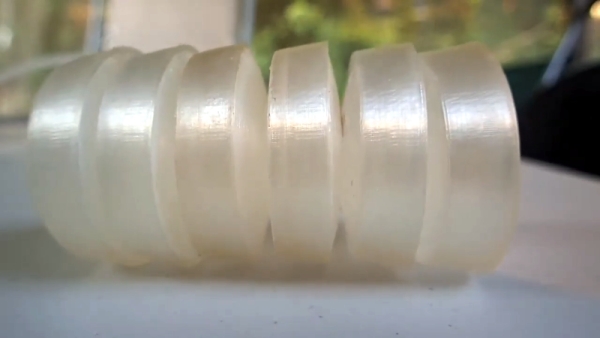If you think about building a moving machine, you probably will consider wheels or tracks or maybe even a prop to take you airborne. When [nwlauer] found an earthworm in the garden, it inspired a 3D-printed robot that employs peristaltic motion. You can see a video of it moving, below.

The robot uses pneumatics and soft plastic, and is apparently waterproof. Your printer’s feed path has to be pretty rigid to support flexible filament without jamming. There’s also some PVA filament and silicone tubing involved.
For the control side, an Arduino controls a diaphragm pump and six small solenoid valves. We were amused to read that the solenoid valves are often used in eye massagers. The code is on GitHub.
The segments have Ninjaflex along with PVA support inserts. You glue the centers of each segment together, but not the edges, and then dissolve the PVA to form the air chambers inside.
The motion isn’t very efficient looking, but it probably handles a lot of terrain options. We aren’t sure if there is a real practical use for this technique in its current form, but we bet it could be adapted plus it is just a cool example of something to do with flexible filament besides printing phone cases.
We’ve seen Ninjaflex used for more practical purposes such as custom belts. Keypads are another practical project.
Source: ROBOTIC WORM USES NINJAFLEX FILAMENT
